हरिमन्दिर साहिब
( Golden Temple )
The Golden Temple (also known as the Harmandir Sahib (lit. 'House of God', Punjabi pronunciation: [ɦəɾᵊmən̪d̪əɾᵊ saːɦ(ɪ)bᵊ]), or the Darbār Sahib, (lit. ''exalted court'', [d̪əɾᵊbaːɾᵊ saːɦ(ɪ)bᵊ] or Suvaran Mandir) is a gurdwara located in the city of Amritsar, Punjab, India. It is the pre-eminent spiritual site of Sikhism. It is one of the holiest sites in Sikhism, alongside the Gurdwara Darbar Sahib Kartarpur in Kartarpur, and Gurdwara Janam Asthan in Nankana Sahib.
The man-made pool on the site of the temple was completed by the fourth Sikh Guru, Guru Ram Das, in 1577. In 1604, Guru Arjan, the fifth Sikh Guru, placed a copy of the Adi Granth in the Golden Templ...Read more
The Golden Temple (also known as the Harmandir Sahib (lit. 'House of God', Punjabi pronunciation: [ɦəɾᵊmən̪d̪əɾᵊ saːɦ(ɪ)bᵊ]), or the Darbār Sahib, (lit. ''exalted court'', [d̪əɾᵊbaːɾᵊ saːɦ(ɪ)bᵊ] or Suvaran Mandir) is a gurdwara located in the city of Amritsar, Punjab, India. It is the pre-eminent spiritual site of Sikhism. It is one of the holiest sites in Sikhism, alongside the Gurdwara Darbar Sahib Kartarpur in Kartarpur, and Gurdwara Janam Asthan in Nankana Sahib.
The man-made pool on the site of the temple was completed by the fourth Sikh Guru, Guru Ram Das, in 1577. In 1604, Guru Arjan, the fifth Sikh Guru, placed a copy of the Adi Granth in the Golden Temple and was a prominent figure in its development. The gurdwara was repeatedly rebuilt by the Sikhs after it became a target of persecution and was destroyed several times by the Mughal and invading Afghan armies. Maharaja Ranjit Singh, after founding the Sikh Empire, rebuilt it in marble and copper in 1809, and overlaid the sanctum with gold leaf in 1830. This has led to the name the Golden Temple.
The Golden Temple is spiritually the most significant shrine in Sikhism. It became a centre of the Singh Sabha Movement between 1883 and the 1920s, and the Punjabi Suba movement between 1947 and 1966. In the early 1980s, the gurdwara became a centre of conflict between the Indian government and a radical movement led by Jarnail Singh Bhindranwale. In 1984, Prime Minister Indira Gandhi sent in the Indian Army as part of Operation Blue Star, leading to deaths of more than 1,000 soldiers, militants and civilians, as well as causing much damage to the gurdwara and the destruction of Akal Takht. The gurdwara complex was rebuilt again after the 1984 damage.
The Golden Temple is an open house of worship for all people, from all walks of life and faiths. It has a square plan with four entrances, and a circumambulation path around the pool. The four entrances to the gurudwara symbolises the Sikh belief in equality and the Sikh view that all people are welcome into their holy place. The complex is a collection of buildings around the sanctum and the pool. One of these is Akal Takht, the chief centre of religious authority of Sikhism. Additional buildings include a clock tower, the offices of the Gurdwara Committee, a Museum and a langar – a free Sikh community-run kitchen that offers a vegetarian meal to all visitors without discrimination. Over 150,000 people visit the holy shrine everyday for worship. The Gurdwara complex has been nominated as a UNESCO World Heritage Site, and its application is pending on the tentative list of UNESCO.
 Guru Arjan overseeing the construction of the original Golden Temple (Harmandir Sahib), painting from c. 1890–95
Guru Arjan overseeing the construction of the original Golden Temple (Harmandir Sahib), painting from c. 1890–95According to the Sikh historical records, the land that became Amritsar and houses the Harimandir Sahib was chosen by Guru Amar Das, the third Guru of the Sikh tradition. It was then called Guru Da Chakk, after he had asked his disciple Ram Das to find land to start a new town with a man-made pool as its central point.[1][2][3] After Guru Ram Das succeeded Guru Amar Das in 1574, and in the face of hostile opposition from the sons of Guru Amar Das,[4] Guru Ram Das founded the town that came to be known as "Ramdaspur". He started by completing the pool with the help of Baba Buddha (not to be confused with the Buddha of Buddhism). Guru Ram Das built his new official centre and home next to it. He invited merchants and artisans from other parts of India to settle in the new town with him.[3]
 A Sikh Guru (perhaps Guru Arjan) seated in the Golden Temple at Amritsar in the late 16th or early 17th century, c. 1830 Guler painting
A Sikh Guru (perhaps Guru Arjan) seated in the Golden Temple at Amritsar in the late 16th or early 17th century, c. 1830 Guler paintingRamdaspur town expanded during the time of Guru Arjan financed by donations and constructed by voluntary work. The town grew to become the city of Amritsar, and the area grew into the temple complex).[5] The construction activity between 1574 and 1604 is described in Mahima Prakash Vartak, a semi-historical Sikh hagiography text likely composed in 1741, and the earliest known document dealing with the lives of all the ten Gurus.[6] Guru Arjan installed the scripture of Sikhism inside the new gurdwara in 1604.[5] Continuing the efforts of Guru Ram Das, Guru Arjan established Amritsar as a primary Sikh pilgrimage destination. He wrote a voluminous amount of Sikh scripture including the popular Sukhmani Sahib.[7][8]
Construction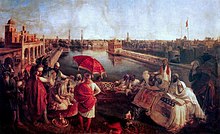 Maharaja Ranjit Singh listening to Guru Granth Sahib being recited near the Akal Takht and Golden Temple, Amritsar, Punjab, India.
Maharaja Ranjit Singh listening to Guru Granth Sahib being recited near the Akal Takht and Golden Temple, Amritsar, Punjab, India.Guru Ram Das acquired the land for the site. Two versions of stories exist on how he acquired this land. In one, based on a Gazetteer record, the land was purchased with Sikh donations of 700 rupees from the people and owners of the village of Tung. In another version, Emperor Akbar is stated to have donated the land to the wife of Guru Ram Das.[3][9]
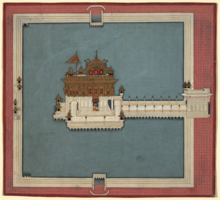 The Golden Temple, Amritsar, c. 1840
The Golden Temple, Amritsar, c. 1840In 1581, Guru Arjan initiated the construction of the Gurdwara.[10] During the construction the pool was kept empty and dry. It took 8 years to complete the first version of the Harmandir Sahib. Guru Arjan planned a gurdwara at a level lower than the city to emphasise humility and the need to efface one's ego before entering the premises to meet the Guru.[10] He also demanded that the gurdwara compound be open on all sides to emphasise that it was open to all. The sanctum inside the pool where his Guru seat was, had only one bridge to emphasise that the end goal was one, states Arvind-Pal Singh Mandair.[10] In 1589, the gurdwara made with bricks was complete. Guru Arjan is believed by some later sources to have invited the Sufi saint Mian Mir of Lahore to lay its foundation stone, signalling pluralism and that the Sikh tradition welcomed all.[10] This belief is however unsubstantiated.[11][12] According to Sikh traditional sources such as Sri Gur Suraj Parkash Granth it was laid by Guru Arjan himself.[13] After the inauguration, the pool was filled with water. On 16 August 1604, Guru Arjan completed expanding and compiling the first version of the Sikh scripture and placed a copy of the Adi Granth in the gurdwara. He appointed Baba Buddha as the first Granthi.[14]
Ath Sath Tirath, which means "shrine of 68 pilgrimages", is a raised canopy on the parkarma (circumambulation marble path around the pool).[15][16][17] The name, as stated by W. Owen Cole and other scholars, reflects the belief that visiting this temple is equivalent to 68 Hindu pilgrimage sites in the Indian subcontinent, or that a Tirath to the Golden Temple has the efficacy of all 68 Tiraths combined.[18][19] The completion of the first version of the Golden Temple was a major milestone for Sikhism, states Arvind-Pal Singh Mandair, because it provided a central pilgrimage place and a rallying point for the Sikh community, set within a hub of trade and activity.[10]
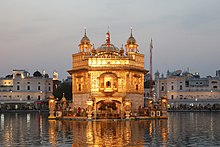 The Golden Temple at twilightMughal Empire era destruction and rebuilding
The Golden Temple at twilightMughal Empire era destruction and rebuilding
The growing influence and success of Guru Arjan drew the attention of the Mughal Empire. Guru Arjan was arrested under the orders of the Mughal Emperor Jahangir and asked to convert to Islam.[20][21] He refused, was tortured and executed in 1606.[20][21][22] Guru Arjan's son and successor Guru Hargobind fought a Battle at Amritsar and later left Amritsar and its suronding areas in 1635 for Kiratpur.[23][24] For about a century after the Golden Temple was occupied by the Minas.[23] In the 18th century, Guru Gobind Singh after creating the Khalsa sent Bhai Mani Singh to take back the temple.[23][25][26] The Golden Temple was viewed by the Mughal rulers and Afghan Sultans as the centre of Sikh faith and it remained the main target of persecution.[27] After the original temple was destroyed by hostile forces, the shrine was reconstructed in 1764 (a date which H.H. Cole affirms in his monograph on the temple), however most of the elaborate decorations and additions were added to the shrine in the early 19th century.[28] However, according to Giani Gian Singh's Tawarikh Sri Amritsar (1889), a slightly later date of 1776 is given for the construction of the temple tank (sarovar), the temple edifice proper, the causeway, and the entry gateway or archway (Darshani Deori).[28]
The Golden Temple was the centre of historic events in Sikh history:[29][30]
In 1709, the governor of Lahore sent in his army to suppress and prevent the Sikhs from gathering for their festivals of Vaisakhi and Diwali. But the Sikhs defied by gathering in the Golden Temple. In 1716, Banda Singh and numerous Sikhs were arrested and executed. In 1737, the Mughal governor ordered the capture of the custodian of the Golden Temple named Mani Singh and executed him. He appointed Masse Khan as the police commissioner who then occupied the Temple and converted it into his entertainment centre with dancing girls. He befouled the pool. Sikhs avenged the sacrilege of the Golden Temple by assassinating Masse Khan inside the Temple in August 1740. In 1746, another Lahore official Diwan Lakhpat Rai working for Yahiya Khan, and seeking revenge for the death of his brother, filled the pool with sand. In 1749, Sikhs restored the pool when Muin ul-Mulk slackened Mughal operations against Sikhs and sought their help during his operations in Multan. In 1757, the Afghan ruler Ahmad Shah Durrani, also known as Ahmad Shah Abdali, attacked Amritsar and desecrated the Golden Temple.[31] He had waste poured into the pool along with entrails of slaughtered cows, before departing for Afghanistan. The Sikhs restored it again. In 1762, Ahmad Shah Durrani returned and had the Golden Temple blown up with gunpowder.[31] Sikhs returned and celebrated Diwali in its premises. In 1764, Baba Jassa Singh Ahluwalia collected donations to rebuild the Golden Temple.[28] A new main gateway (Darshan Deorhi), causeway and sanctum were completed in 1776, while the floor around the pool was completed in 1784.[28] The Sikhs also completed a canal to bring in fresh water from Ravi River for the pool. Shri Harmandir Sahib was attacked by the Afghan forces under Ahmed Shah Abdali on 1 December 1764. Baba Gurbaksh Singh along with 29 other Sikhs lead a last stand against the much larger Afghan forces and were killed in the skirmish.[32] Abdali then destroyed Shri Harmandir Sahib for the 3rd time.[33][31]Ranjit Singh era reconstruction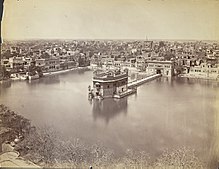 An 1880 photograph of the Golden Temple, sacred pool and the nearby buildings. The walled courtyard and entrances were added later.
An 1880 photograph of the Golden Temple, sacred pool and the nearby buildings. The walled courtyard and entrances were added later.Ranjit Singh founded the nucleus of the Sikh Empire at the age of 36 with help of Sukerchakia Misl forces he inherited and those of his mother-in-law Rani Sada Kaur. In 1802, at age 22, he took Amritsar from the Bhangi Sikh misl, paid homage at the Golden Temple and announced that he would renovate and rebuild it with marble and gold.[34][28] The Sikh ruler donated the gilded copper panels for the roof, which was worth 500,000 rupees in the erstwhile currency.[28] He entrusted Mistri Yar Muhammad Khan to carry-out the roofing work, who himself was supervised by Bhai Sand Singh.[28] The first gilded copper panel was placed on the shrine in 1803.[28]
Various personalities helped decorate and embellish the ceiling of the first floor, with names of some contributors to the cause being Tara Singh Gheba, Partap Singh, Jodh Singh, and Ganda Singh Peshawari.[28] Ganda Singh Peshawari sent his donation in the year 1823.[28] For the decoration and gilding with copper of the main entryway and archway to the causeway leading to the temple proper, known as the Darshani Deori, the prime personality who helped assist with this work was Raja Sangat Singh of Jind State.[28] Due to the central and paramount importance of the shrine in Sikhism, essentially every Sikh sardar of the era had contributed or donated in some manner to assist with the architectural and artistic renovations of the shrine.[28] Due to the large amount of people helping with the renovation work back then, it is difficult to account for when certain parts of the temple were constructed or decorated and by whom (aside from instances where the work has a date inscribed to it) and a chronological record of how the temple evolved over time (in-regards to its murals, decorations, and other aspects) is near-impossible to complete.[28]
The Temple was renovated in marble and copper in 1809, and in 1830 Ranjit Singh donated gold to overlay the sanctum with gold leaf.[30] There is an inscription on embossed metal located at the entrance to the temple proper which comemmorates the renovations of the temple undertaken by Ranjit Singh.[28]
"The Great Guru in His wisdom looked upon Maharaja Ranjit Singh as his chief servitor and Sikh and, in his benevolence, bestowed on him the privilege of serving the temple."
After learning of the Gurdwara through Maharaja Ranjit Singh,[35] the 7th Nizam of Hyderabad "Mir Osman Ali Khan" started giving yearly grants towards it.[36]
The management and operation of Durbar Sahib – a term that refers to the entire Golden Temple complex of buildings, was taken over by Ranjit Singh. He appointed Sardar Desa Singh Majithia (1768–1832) to manage it and made land grants whose collected revenue was assigned to pay for the Temple's maintenance and operation. Ranjit Singh also made the position of Temple officials hereditary.[15]
Destruction and reconstruction after Indian independence Interior of Darbar Sahib with gold encrusted walls and featuring a golden chandelier
Interior of Darbar Sahib with gold encrusted walls and featuring a golden chandelierThe destruction of the temple complex occurred during the Operation Blue Star. It was the codename of an Indian military action carried out between 1 and 8 June 1984 to remove militant Sikh Jarnail Singh Bhindranwale and his followers from the buildings of the Harmandir Sahib (Golden Temple) complex in Amritsar, Punjab. The decision to launch the attack rested with Prime Minister Indira Gandhi.[37] In July 1982, Harchand Singh Longowal, the President of the Sikh political party Akali Dal, had invited Bhindranwale to take up residence in the Golden Temple Complex to evade arrest.[38][39] The government claimed Bhindranwale later made the sacred temple complex an armoury and headquarters.[40]
On 1 June 1984, after negotiations with the militants failed, Indira Gandhi ordered the army to launch Operation Blue Star, simultaneously attacking scores of Sikh temples across Punjab.[41] A variety of army units and paramilitary forces surrounded the Golden Temple complex on 3 June 1984. The fighting started on 5 June with skirmishes and the battle went on for three days, ending on 8 June. A clean-up operation codenamed Operation Woodrose was also initiated throughout Punjab.[42]
The army had underestimated the firepower possessed by the militants, whose armament included Chinese-made rocket-propelled grenade launchers with armour piercing capabilities. Tanks and heavy artillery were used to attack the militants, who responded with anti-tank and machine-gun fire from the heavily fortified Akal Takht. After a 24-hour firefight, the army gained control of the temple complex. Casualty figures for the army were 83 dead and 249 injured.[43] According to the official estimates, 1,592 militants were apprehended and there were 493 combined militant and civilian casualties.[44] According to the government claims, high civilian casualties were attributed to militants using pilgrims trapped inside the temple as human shields.[45]
Brahma Chellaney, the Associated Press's South Asia correspondent, was the only foreign reporter who managed to stay on in Amritsar despite the media blackout.[46] His dispatches, filed by telex, provided the first non-governmental news reports on the bloody operation in Amritsar. His first dispatch, front-paged by The New York Times, The Times of London and The Guardian, reported a death toll about twice of what authorities had admitted. According to the dispatch, about 780 militants and civilians and 400 troops had perished in fierce gun-battles.[47] Chellaney reported that about "eight to ten" men suspected Sikh militants had been shot with their hands tied. In that dispatch, Chellaney interviewed a doctor who said he had been picked up by the army and forced to conduct postmortems despite the fact he had never done any postmortem examination before.[48] In reaction to the dispatch, the Indian government charged Chellaney with violating Punjab press censorship, two counts of fanning sectarian hatred and trouble, and later with sedition,[49] calling his report baseless and disputing his casualty figures.[50]
The military action in the temple complex was criticised by Sikhs worldwide, who interpreted it as an assault on the Sikh religion.[51] Many Sikh soldiers in the army deserted their units;[52] several Sikhs resigned from civil administrative office and returned awards received from the Indian government. Five months after the operation, on 31 October 1984, Indira Gandhi was assassinated in an act of revenge by her two Sikh bodyguards, Satwant Singh and Beant Singh.[39] Public outcry over Gandhi's death led to the killings of more than 3,000 Sikhs in Delhi alone, in the ensuing 1984 anti-Sikh riots.[53] A few months after the government operation of 1984, major kar seva renovations were undertaken at the shrine complex, including a complete draining and then cleaning of the temple tank (sarovar) by volunteers.[28]
Following the operation the central government demolished hundreds of houses and created a corridor around the compound called "Galliara" (also spelled Galiara or Galyara) for security reasons.[54] This was made into a public park and opened in June 1988.[55][56][57][58]
In December 2021, a young man was allegedly beaten to death after disrupting the Rehras Sahib (evening prayer) at the sanctum of the temple. He reportedly jumped over a railing and picked up the sword lying before the temple's copy of the Guru Granth Sahib, before attempting to touch the Guru Granth Sahib itself. He was subsequently overpowered by the sangat and received fatal injuries to the head.[59]
Damage from 2023 events 2023 Golden Temple blasts on 7 May and on 9 May 2023.[60]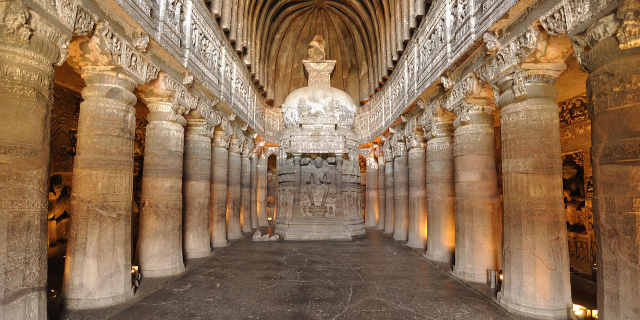








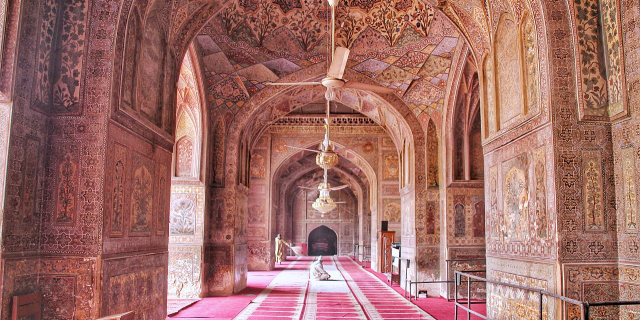

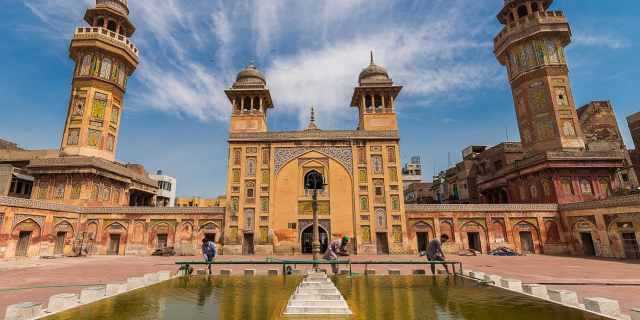
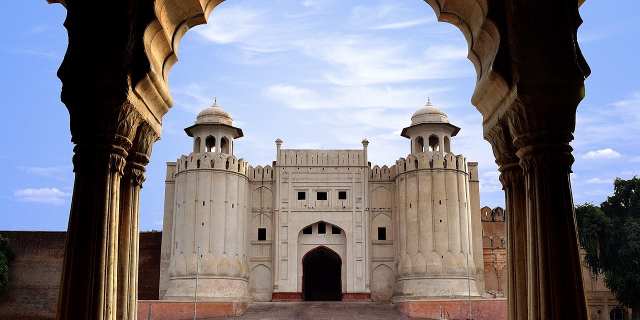


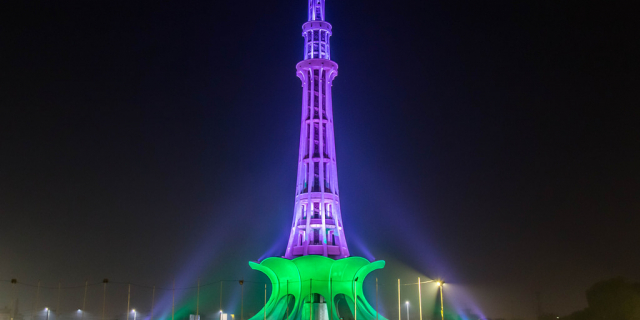
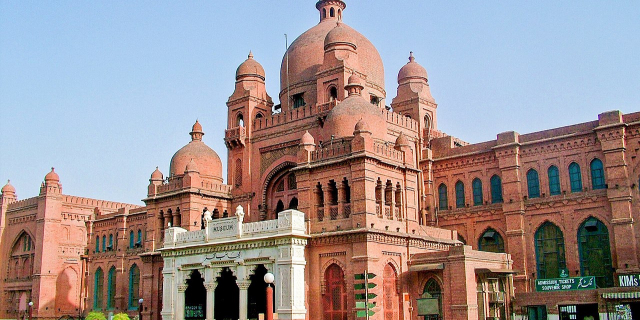


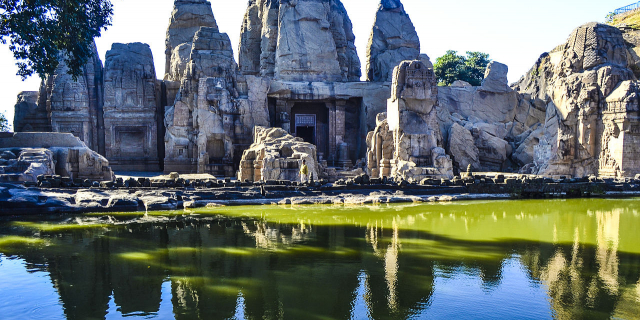


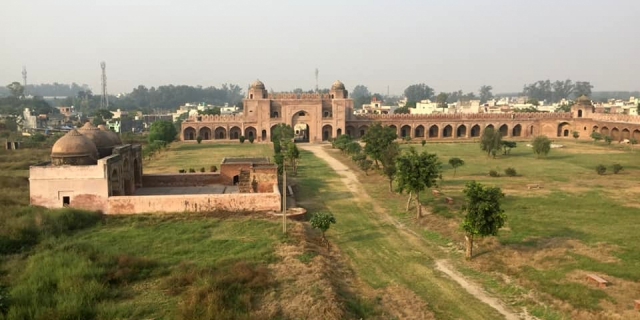
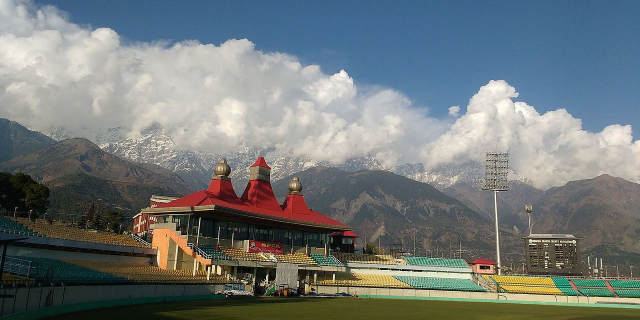
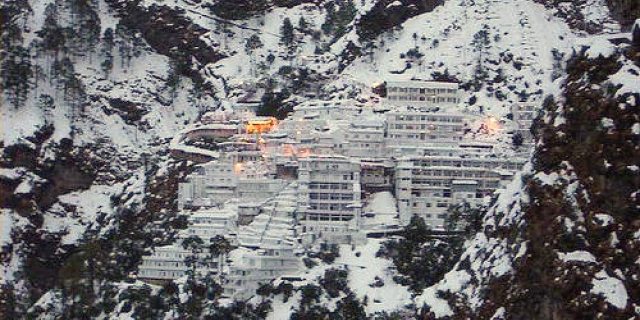



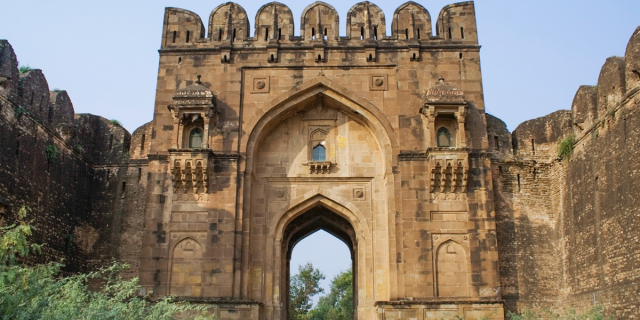



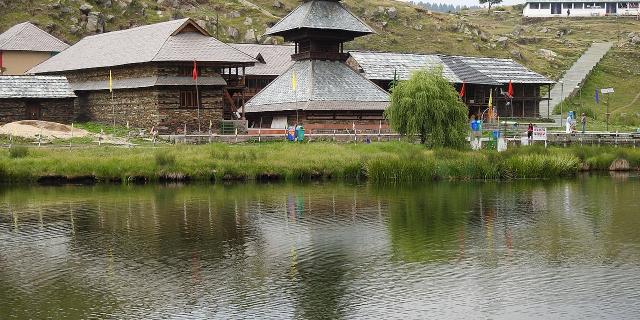

Add new comment